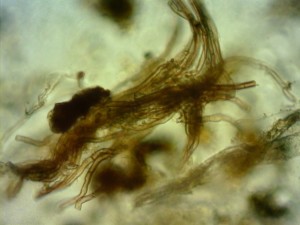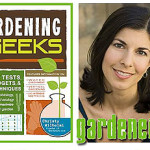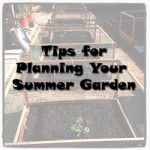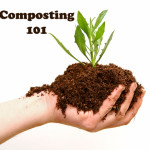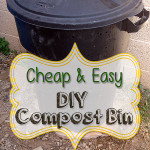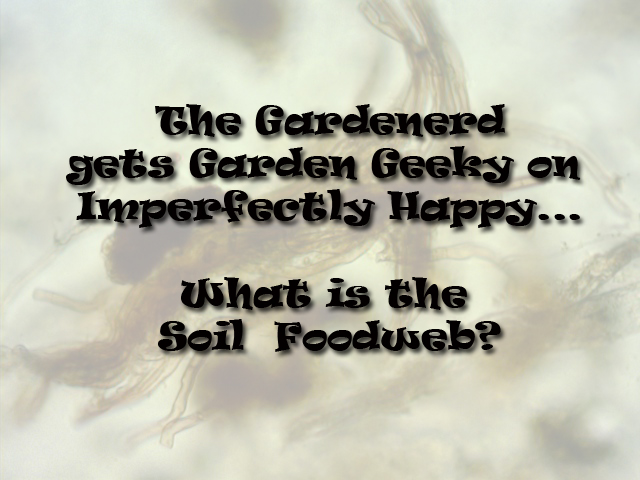 Today it is my distinct privilege to welcome Christy Wilhelmi of Gardenerd.com and the author of Gardening for Geeks. She also specializes in small-space, organic vegetable garden design and consulting. She holds regular organic gardening classes in California, and has co-taught organic gardening at the Esalen Institute in Big Sur, CA. Christy has been a board member of Ocean View Farms Organic Community Garden in Mar Vista, California since 1999, and gardens almost entirely with heirloom vegetables.
Today it is my distinct privilege to welcome Christy Wilhelmi of Gardenerd.com and the author of Gardening for Geeks. She also specializes in small-space, organic vegetable garden design and consulting. She holds regular organic gardening classes in California, and has co-taught organic gardening at the Esalen Institute in Big Sur, CA. Christy has been a board member of Ocean View Farms Organic Community Garden in Mar Vista, California since 1999, and gardens almost entirely with heirloom vegetables.
So, yeah, she’s basically the bomb. 😉
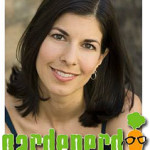 Soil FoodWeb
Soil FoodWeb
by Christy Wilhelmi, founder of Gardenerd
excerpted from Gardening for Geeks, Adams Media, 2013
You may have seen those handy soil tests in the nursery or in gardening catalogs; the ones with separate color-coded capsules for testing nitrogen, phosphorus, potassium and pH. Those tests tell you what’s going on in your soil, what
nutrients are present and available for plants to use. But there is so much more going on. In addition to soil nutrients and micronutrients, there is an entire world (or underworld, in this case) of insects and microbial life forms in your soil that make the plant world go ’round. It’s called the Soil Foodweb: fungi, bacteria, protozoa, earthworms, and nematodes all have a purpose—a job to do. They are the backstage hands making the show run flawlessly.
Dr. Elaine Ingham, a soil microbiologist, first wrote about and coined the phrase Soil Foodweb during her research on soil microbiology in the 1980s and ’90s. Jeff Lowenfels and Wayne Lewis, while tipping their hats to Dr. Ingham, uncover this world in their book, Teaming with Microbes. They deftly explain how plants not only take up nutrients, but also “produce chemicals they excrete through their roots.” The excretions, or “exudates,” are then consumed by fungi and bacteria, which in turn are consumed by protozoa and nematodes, which then excrete waste that is taken back up by the plant as food. How convenient! Don’t forget the host of arthropods and insects, which burrow and aerate the soil, living and completing their life cycle (naturally or otherwise—being eaten by birds or other predators). When they die, their bodies go back into the food chain, breaking down into usable organic matter, which is once again consumed by microbes, and eventually plants. This overlapping series of complicated food chains is the Soil Foodweb.
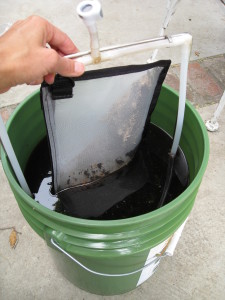
“Brewing compost tea from biologically active compost is a great way to add microbes to your garden soil.”
It’s fascinating stuff, but why does this matter to you as a gardener? It matters because when your soil is healthy enough to support this intricate underworld of microbial activity, your garden will be more likely to thrive. Not only that, but everything you do in the garden can help or hamper the Soil Foodweb. Every box of fertilizer, every shovelful of compost, every bottle of bug spray that is used on your plants affects this underworld. The bottom line? Grow organically, use homemade compost (chock full of microbes) and learn all you can to keep your garden’s microbiology thriving.
